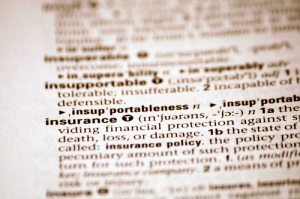 UPDATE 1/9/2012: In the original version of this post, an incorrect picture was used of the new water reclamation facility for Spokane County, WA. This photo is the facility discussed in the lawsuit. Many thanks to David Moss, PE, for the correction.
UPDATE 1/9/2012: In the original version of this post, an incorrect picture was used of the new water reclamation facility for Spokane County, WA. This photo is the facility discussed in the lawsuit. Many thanks to David Moss, PE, for the correction.
When last we left off, the causes of the Spokane wastewater treatment disaster were revealed to be a combination of three things: 1) a blocked overflow pipe; 2) a malfunctioning monitoring system inside the digester; and 3) a failed attempted to transfer sludge out of the digester.
Once this information came to light, the plaintiffs and their families filed a negligence action against CH2M and the city. The city of Spokane was immune from liability under the state’s Industrial Insurance Act. The only issue at trial was whether CH2M was negligent. The lower court ruled in favor of the plaintiffs, finding CH2M negligent. CH2M appealed the ruling, contending that it too ought to enjoy immunity under the Industrial Insurance Act.
The Court was confronted with determining whether immunity should be granted to the engineering firm. One provision of the Act states that that an injured worker may not seek damages against a design professional who is a third person retained to perform professional services on a construction project. However, a different provision states that immunity does not apply to the negligent preparation of design plans.
CH2M argued that the entire plant was a construction project, thus entitling it to immunity. It further argued that it did not prepare design plans, and as such the design plans provision of the Act should not apply. The plaintiffs argued the plant was not a construction site, and that CH2M did, in fact, prepare design plans negligently.
The Court found that there was undoubtedly construction occurring on the sewage treatment campus. The question was whether the existence of construction somewhere on the campus triggered automatic immunity. The Court concluded it did not. The construction was isolated on various parts of the campus and not widespread enough to cause the entire campus to be deemed a construction site.
With regard to producing design plans, the Court said that there was no appreciable difference in recommending a change in the piping of the sludge and the locations of the skillets under an “on call” service agreement, and preparing written plans and specifications to accomplish the same thing. The Court found that it was difficult to believe the legislature intended to allow design professionals to escape liability for negligent work by simply not writing down their plans.
The Court also held that CH2M owed a duty of care, as all such professionals do, and that the duty extended to the injured employees. The Court found that the duty was breached and that the breach was the proximate cause of the employees’ injuries.
Taken as a whole, the Court stated that the legislature, when enacting the Industrial Insurance Act, intended to protect design engineers from the sort of liability imposed on general contractors for workplace safety. The Court refused, however, to believe that the legislature intended to protect design engineers from their own negligence.
Tomorrow, 3 take-away lessons from the case.
Thoughts, comments, or questions? Post in the comment section, below.



